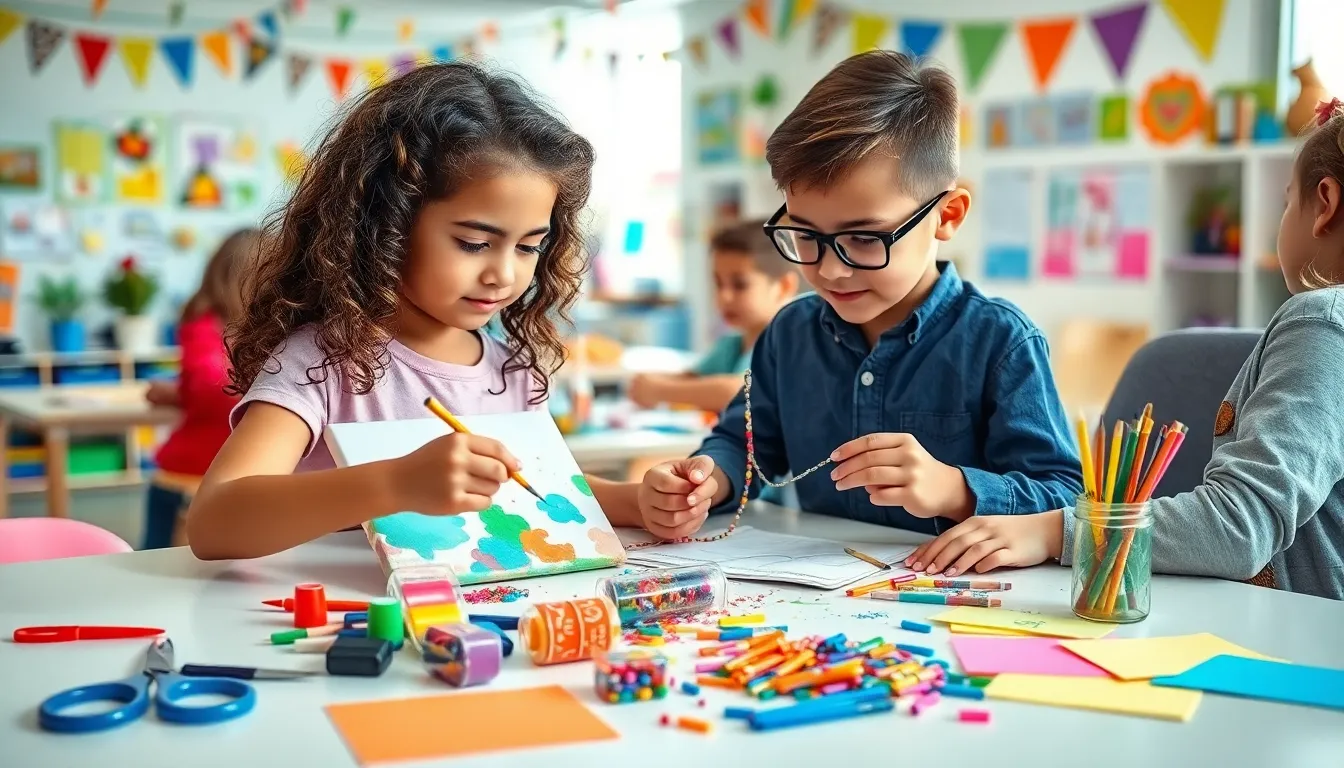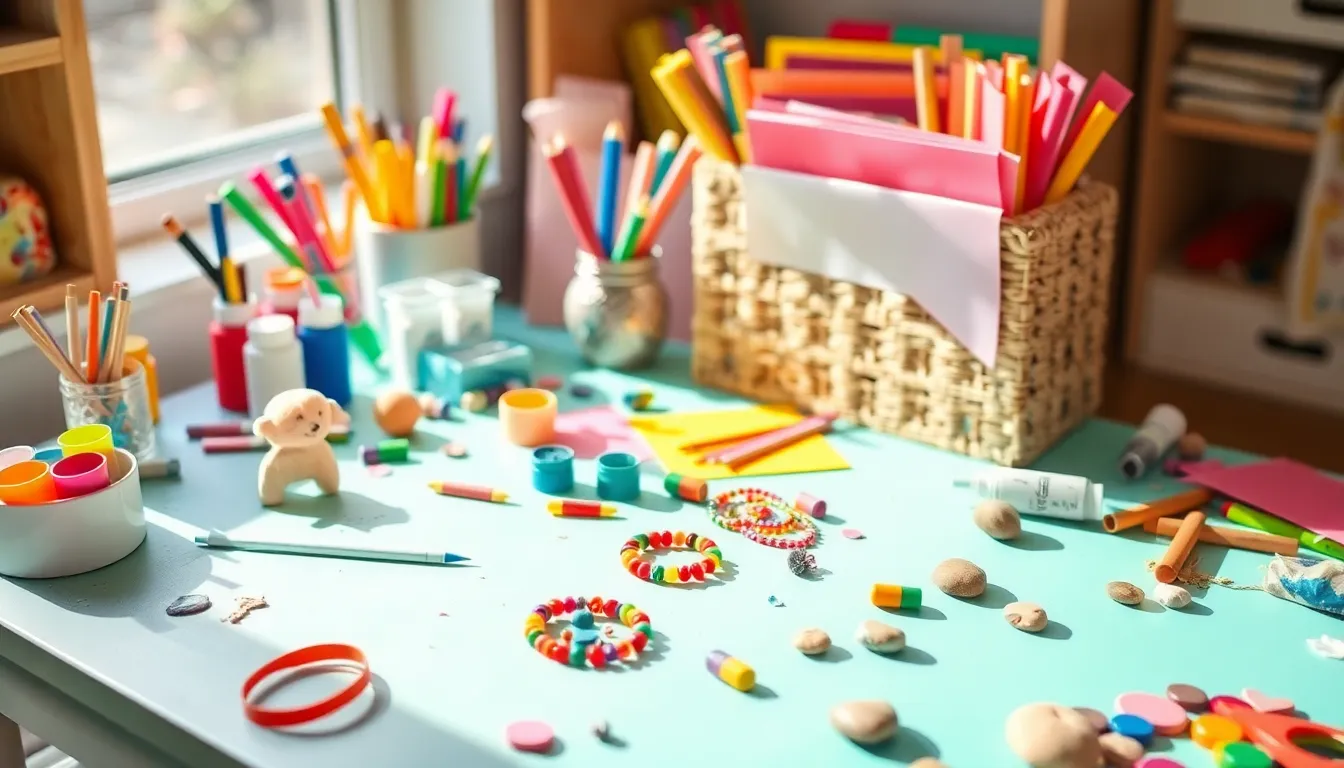When it comes to keeping kids engaged and entertained, nothing tops the joy of DIY arts and crafts. Picture this: paint splatters on the walls, glitter everywhere, and miniature masterpieces emerging from what seemed like a chaotic mess. But beyond the sticky fingers and colorful spills, there are incredible benefits that transform ordinary afternoons into extraordinary adventures. This article explores why DIY arts and crafts should be a staple in every child’s schedule, jump into popular projects, and share tips to ensure that every crafting session is a hit. So, grab those scissors and unleash your imagination.
Table of Contents
ToggleBenefits Of DIY Arts And Crafts For Kids

Engaging in DIY arts and crafts offers numerous benefits that extend far beyond the end product. Well-crafted projects are gateways to growth in multiple areas.
Boosts Creativity and Imagination
Kids are naturally imaginative. DIY arts and crafts provide the perfect canvas for their creativity to flourish. Whether they’re painting, sculpting, or designing, these activities encourage them to think outside the box. There’s no right or wrong when it comes to art: kids learn to express themselves and their unique perspectives through their creations.
Enhances Fine Motor Skills
Crafting activities, from cutting paper to threading beads, help develop fine motor skills. These skills are essential for daily tasks, including writing and using utensils. By manipulating various materials, kids hone their dexterity, which lays a solid foundation for future academic success and refined movement.
Encourages Problem-Solving Skills
Every craft project presents challenges, how to make that glue stick better or how to balance a tower of blocks. Engaging in DIY arts and crafts nurtures problem-solving abilities as children strategize and experiment. Walking through setbacks teaches resilience, a crucial life skill that will serve them well beyond their crafting endeavors.
Popular DIY Arts And Crafts Projects For Kids
Every kid has their passions, and DIY arts and crafts can cater to a variety of interests. Here are some popular projects that ignite imagination:
Paper Crafts
What can’t you do with a piece of paper? From origami to handmade cards, paper crafts are versatile and easy. Kids can create 3D models, colorful collages, or even whimsical puppets. Imagine the smiles when they present handmade cards for special occasions.
Recyclable Materials Crafts
Transforming junk into treasure brings an extra layer of excitement. Using items like bottle caps, cardboard boxes, and old magazines, kids can create unique art pieces while learning about recycling. This not only sparks their creativity but instills eco-consciousness at an early age.
Nature-Inspired Crafts
Nature serves as the perfect muse for budding artists. Collecting leaves, rocks, or flowers opens the door to numerous craft ideas, such as leaf rubbings or rock painting. Nature crafts not only immerse kids in creativity but also encourage exploration and appreciation of the environment.
Seasonal Crafts
Embrace the changing seasons with themed crafting. Around Halloween, for instance, kids can make spooky decorations, while spring can inspire flower crowns. This keeps projects fresh and engaging throughout the year, enabling kids to relate art to their daily experiences.
Tips For Successful DIY Arts And Crafts Sessions
To make every DIY session a successful one, here are some valuable tips to consider:
Setting Up a Creative Space
Designating a specific area for crafting helps children focus and get into the creative mindset. A dedicated space, whether it’s a table in the living room or a corner in the backyard, encourages them to associate that area with creativity. Make sure to have all necessary supplies within easy reach.
Choosing Age-Appropriate Projects
Understanding a child’s developmental stage is crucial when selecting craft projects. Younger kids might enjoy simple activities like finger painting, while older children might be ready for more complex tasks requiring precision. Tailoring projects to suit their abilities ensures they remain engaged and feel accomplished.
Incorporating Learning Into Crafts
DIY arts and crafts can seamlessly integrate learning. Want to teach basic math? Try making DIY jewelry by counting beads. Discuss history while creating themed decorations or learn science by experimenting with colors and mixing paints. The possibilities are endless, making learning fun.
Encouraging Experimentation and Exploration
Inspiring kids to experiment and explore is key to their artistic journey. Encourage them to try new techniques, mix colors, and use materials in unexpected ways. This experimentation fosters a sense of independence and self-expression. Letting them take the lead in projects allows their personality to shine, and the more willing they are to take risks in crafting, the more confident they become in their artistic abilities.



